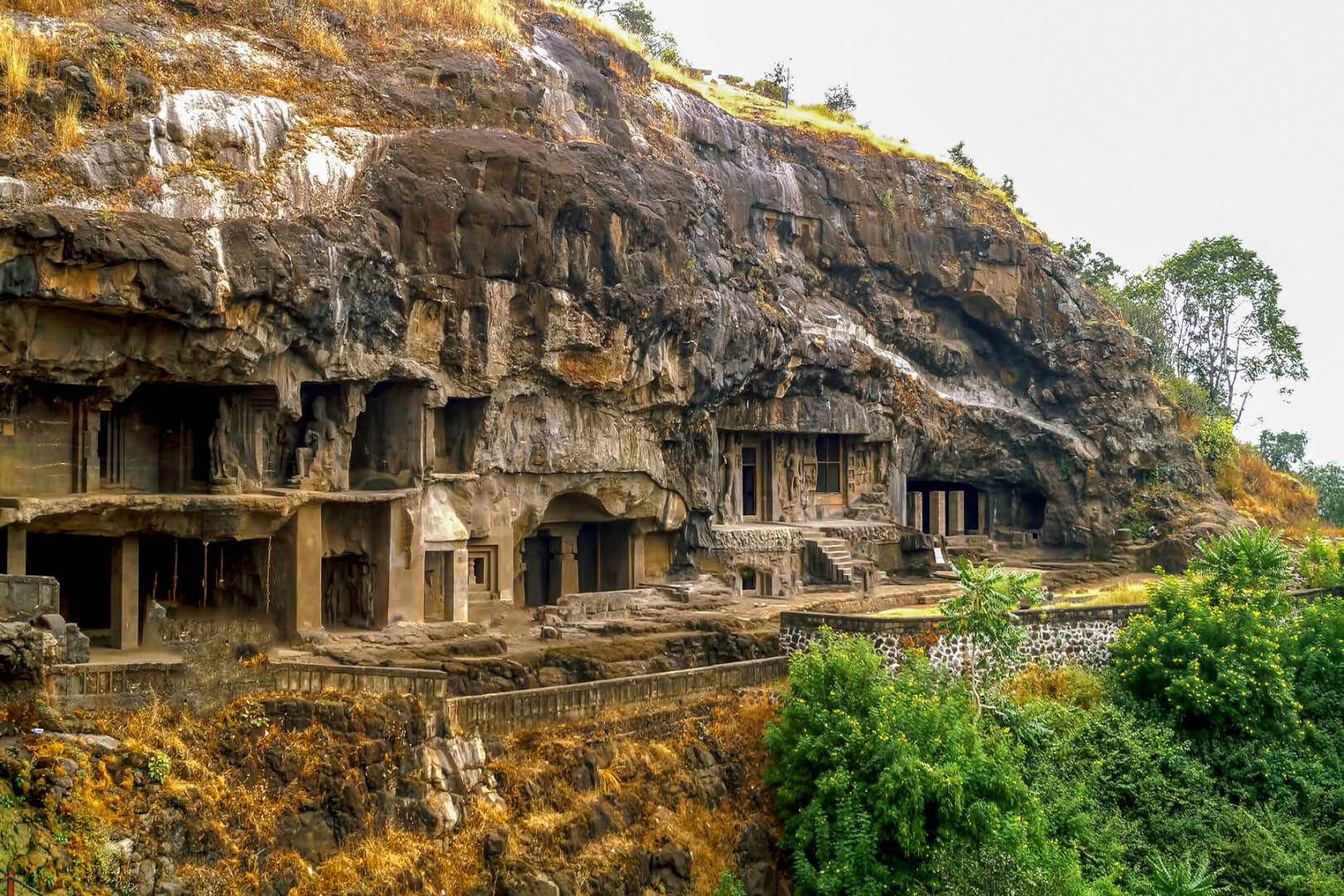- 333 Kms
3 / 5
- Reviews (0)
Location: Near Aurangabad
A UNESCO World Heritage Site, Aurangabad’s Ajanta Caves are stunning ancient rock-cut Buddhist caves built between 2nd century BCE and 480 CE.
Info
Ajanta and Ellora are the pride of Maharashtra. The caves of both these sites are world famous and illustrating the degree of skill and artistry that Indian craftsmen achieved several hundred years ago.
The Ajanta Caves are situated at a distance of 107 km north of Aurangabad. The caves attained the name from a nearby village named Ajanta. These caves were discovered by an Army Officer in the Madras Regiment of the British Army in 181. The discovery became very famous and Ajanta attained a very important tourist destination in the world. The caves are famous for its murals and are the finest surviving examples of Indian art. Caves are open from 9 am to 5 pm. They are closed on Mondays.
These caves are excavated in a mammoth horse–shoe shaped bend of rock surface nearly 76 m in height. All the caves overlook a gorge, and form a room in the hills. The location of this valley offered a calm and serene environment to the Buddhist monks who retreated here during the rainy seasons. The artisans excavated Chaityas (chapels) for prayer and Viharas (monasteries) where they lived. The caves were excavated in different periods circa. 2nd century B.C. to 6th century A.D.
In all, there are 30 excavations hewn out of rock. These were created over a span of some 600 years. Out of the 30, five (cave no. 9, 10, 19, 26, and 29) are chaityagrihas and the rest are viharas.
The world-famous paintings at Ajanta can be categorised into two broad phases. The first, datable to the 2nd century B.C. is noticed in cave nos. 9 & 10. The second phase of paintings started around 5th – 6th centuries A.D. and continued for the next two centuries. The main theme of the paintings is the depiction of Jataka stories, incidents associated with life of Buddha, and the contemporary events and social life. The ceiling decoration consists of geometrical and floral decorative patterns.
Ajanta is an epicentre of interest for those who appreciate and are eager to know more about Indian history and art. They provide a glimpse of life in ancient India and are a source of all kinds of information like various hair styles, ornaments, textiles, musical instruments, details of architecture, customs etc. This collection of classical Indian art travelled along with Buddhism to many parts of the world. Similar paintings can also be seen in Sigiriya in Sri Lanka, Bamiyan in Afghanistan, temples and shrines in Tibet, Nepal, China and Japan.
A question often crosses the mind of a visitor as to how the artists managed to work in the dark interiors of the caves. It has been noticed that the caves are illuminated by natural light for part of the day. Metal mirrors or sheets of white cloth were used to reflect sunlight into the inner recesses.
It is a protected monument under the Archaeological Survey of India and has been listed in the World Heritage list of monuments.
Facilities
- Hotels fitting in all kinds of budget are available at Aurangabad. Quality hotels are also found in Jalgaon.
- Maharastra Tourism Development Corporation’s Holiday Resort in Fardapur is also a good option to stay in Ajanta.
Map
:Rent a Car















